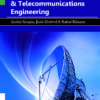Radio propagation is the behavior of radio waves as they travel, or are propagated, from one medium to another, or into different parts of the atmosphere. Radio waves are subject to the influence of the environment in which they are propagated. When a radio wave leaves the boundary of one medium and enters another, the wave changes direction. Radio propagation environments may introduce multipath effects causing fading and channel time dispersion. Various propagation environments have different path loss and multipath effects, leading to the impossibility of radio wave propagation prediction in different propagation environment with the utilization of the same propagation channel model. Understanding the effects of changeable conditions on radio propagation has many practical applications, from selecting frequencies for global shortwave broadcasters, to designing reliable mobile telephone systems, to radio navigation, to operation of radar systems. Radio wave propagation scene portioning plays a very important role in wireless channel modeling. Scene partitioning is also the basis for the upper layer communication network design. Optimization with respect to radio wave propagation will greatly improve the planning of wireless networks for rails. Special railway structures such as cuttings, viaducts, and tunnels have a significant impact on propagation characteristics.
Radio Wave Propagation Fundamentals is dedicated to present state of the art reviews and research results delivering information of basic principles commonly used in radio waves propagation. This includes a detailed discussion of different propagation phenomena, including reflection, refraction, scattering, diffraction, ducting and frequency dispersion in different media. Among various subjects, radiowave equations and polarization, transmission media characteristics and its phenomena, K-factor and Earth equivalent radius, and free space and basic transmission losses are included. To understand these topics, good knowledge of fields and waves theory, electromagnetic engineering, antenna theory, and statistics and applied mathematics is required. Also, to get more familiar with the basic principles of radio waves propagation, some examples are presented. The propagation of radio waves in the vegetation is discussed as vegetation is an indispensable feature of most outdoor wireless channel environments.
This book is valuable for practitioners and students who specialize in antenna, communication and radar systems, providing complete information to the basic principles of electromagnetic wave propagation of radio frequencies in real-world conditions.













